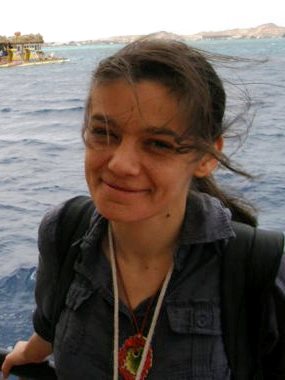New to NESSC: Elena Popa
Meet dr. Elena Popa, who is the new tenure track assistant professor at NESSC! The coming years Elena will work at the Institute for Marine and Atmospheric research Utrecht (IMAU), focusing on the relatively new field of clumped isotopes for which she’ll develop new measuring techniques. Elena ‘s research also aims to aid climate research in pinpointing different sources of strong greenhouse gases such as methane.

“Eight years ago I came to Utrecht, initially for one year – but I never left since. I found at IMAU the perfect combination of people, knowledge and facilities, plus the support and freedom to follow my curiosity and research interests.
In recent years, I worked on a wide range of topics related mostly to atmospheric hydrogen and carbon monoxide, including vehicle emissions, exchange of trace gases between atmosphere, soil and microbes, emission by plants etc. During this period, my interest in atmospheric gases evolved to include isotopes. Currently, I am running the carbon monoxide and hydrogen isotope analysis facilities at the IMAU lab. Because of the uniqueness of these tools, I often get the request to analyse special samples from all over the world and to collaborate in interesting projects. I love the richness and variety of this work which is often interdisciplinary, but I also enjoy doing something that almost nobody else can do.”
Clumped isotopes
“Recently, I began a tenure track position at IMAU’s Atmospheric Physics and Chemistry Group, a perfect opportunity for me to grow in this research field. My work on isotopes will continue, but from now at a different scale and more applied to NESSC projects: using the new MAT-Ultra high resolution mass spectrometer, I will study clumped isotopes of gases like methane, hydrogen and carbon monoxide.
These so-called clumped isotopes refer to molecules that have two or more rare isotopes, and their abundance can give very valuable information about the temperature of formation of atmospheric gasses – and thus their sources. Partly because these clumped molecules are very rare, these measurements are technically extremely challenging. That means they are also potentially very rewarding, as there is a whole research field waiting to be unlocked!”
Sources of methane
“For instance, we aim to analyse the methane isotopes in samples of Arctic ice. Firstly, I will have to set up the specific measurement method. The results should allow us to differentiate between the different sources of biogenic methane, which is methane produced naturally by microbes, and non-biogenic methane, for instance methane produced by the burning of fossil fuels.
I am very enthusiastic about the possibilities for fascinating research offered by this new position. But I am also excited about going to the next level in my career, which comes with new challenges and new opportunities – including teaching and writing my own proposals.”
Elena’s website: https://www.uu.nl/staff/MEPopa/0
With thanks to Sandra Tap from IMAU

